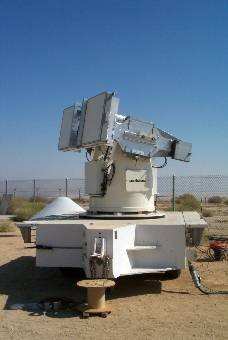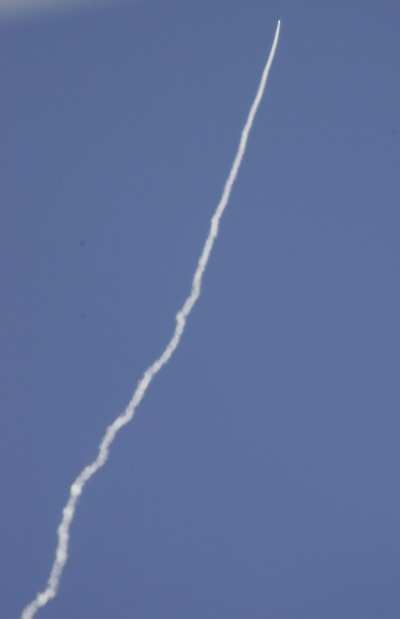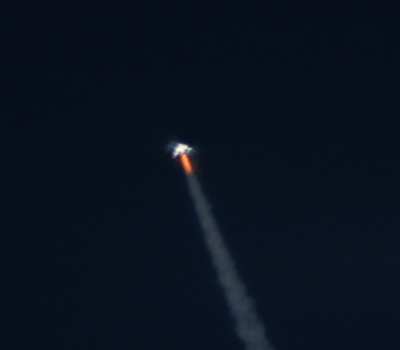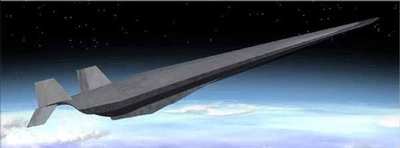Arrival and departure safety system collects data on
trajectory, other parameters
As SpaceShipOne rocketed over the Mojave Desert on October 4 to
claim the famed Ansari XPrize, a team of engineers at Edwards Air
Force Base collected data about the spacecraft’s trajectory
thanks to the spaceport arrival and departure safety system.

In a partnership between the California Space Authority and the
Air Force Flight Test Center, the system performed its first two
technology demonstrations during SpaceShipOne’s flights on
September 29 and again on October 4.
Space authority and center officials said they recognized a need
for a multi-frequency, continuous-wave radar system that can
simultaneously track multiple objects.
In an era when the sky is crowded with commercial aircraft --
and now space planes -- officials said the system offers a new
potential for enhanced safety.

For the center, this technology could be an important asset for
many programs, including monitoring unmanned aerial vehicles, bomb
drops and possibly space shuttle flights, said Allen Khosrowabadi,
the system’s program manager for the 412th Test Wing.
“We can take a product like this to a place on the other
side of the lakebed ... range,” said Robert Selbrede, lead
engineer contractor, “and set it up, so the aspect angles are
the way we want them to be when they drop the bombs. Then (the
aircraft) will fly by and drop a whole load of bombs, and this
radar can actually see all the individual bombs, see them spin, see
the fins come out [and] the whole works. That’s really where
something like this excels."
“Think of SpaceShipOne as a bomb separating from the
aircraft,” Selbrede said. “You would want to know if
the bomb came back up and hit the plane. You would want to see if
it came off and dropped off real quick or if it stayed parallel or
started tumbling right away.”
The key component for the project is the radar. It tracks
velocity differences as objects move toward or away from the
radar’s scope, Mr. Khosrowabadi said.
“Everything in the beam with a velocity component will be
detected,” said Edwin Rutkowski, lead systems engineer for a
subcontractor. The velocity helps the system’s receiver
detect changes in frequency and compute the range for each change,
he added.

The radar, which includes one panel for transmitting and another
for receiving, sits on a mobile kineto-tracking mount, which is
actually 15 to 20 year-old technology. Engineers with the range
operations and maintenance contractor for the 412th TW, installed
the radar and modified the mount to accept the system.
Mr. Khosrowabadi said it was great to see the whole thing come
together. The team had many obstacles to overcome, particularly in
dealing with old and new technologies trying to communicate
coherently within the same system.
In this first phase of development, Mr. Khosrowabadi said the
team simply “wanted to get the radar, get familiar with it
and do a demonstration” to see if it would work for the
center or the range. “Apparently now the answer is
‘yes.’” he said.
The team plans to update the radar’s auto-track feature so
that the system does not have to rely on an individual using visual
tracking alone, officials said.
“Then the next step is to make this an operational system
by doing the upgrades and getting a bigger radar,” Mr.
Khosrowabadi said. “The long-term vision, once hypersonic
[flight] starts happening, is to increase our range by having a
couple of these strung along miles apart. When one loses visual,
another one picks it up. As far as the data (are) concerned, you
won’t see any holes.”

(Thanks to Capt. Kelly George, Air Force Flight Test Center
Public Affairs)
 ANN's Daily Aero-Linx (04.16.24)
ANN's Daily Aero-Linx (04.16.24) Aero-News: Quote of the Day (04.16.24)
Aero-News: Quote of the Day (04.16.24) Airborne 04.10.24: SnF24!, A50 Heritage Reveal, HeliCycle!, Montaer MC-01
Airborne 04.10.24: SnF24!, A50 Heritage Reveal, HeliCycle!, Montaer MC-01 Airborne 04.12.24: SnF24!, G100UL Is Here, Holy Micro, Plane Tags
Airborne 04.12.24: SnF24!, G100UL Is Here, Holy Micro, Plane Tags Airborne-Flight Training 04.17.24: Feds Need Controllers, Spirit Delay, Redbird
Airborne-Flight Training 04.17.24: Feds Need Controllers, Spirit Delay, Redbird






